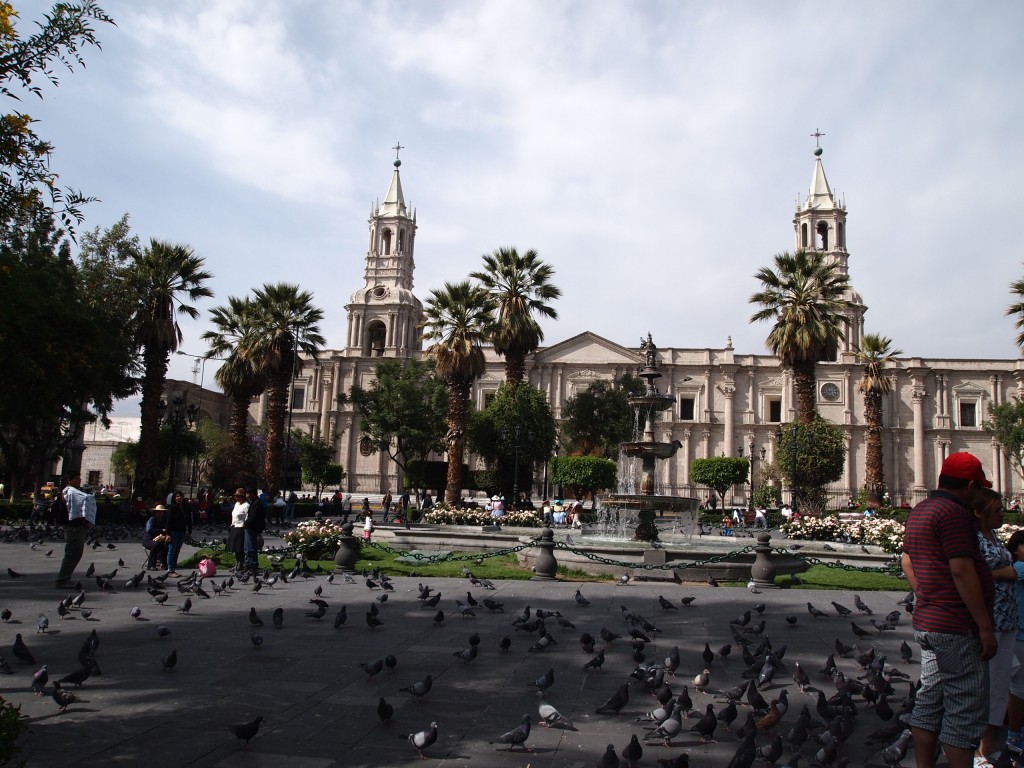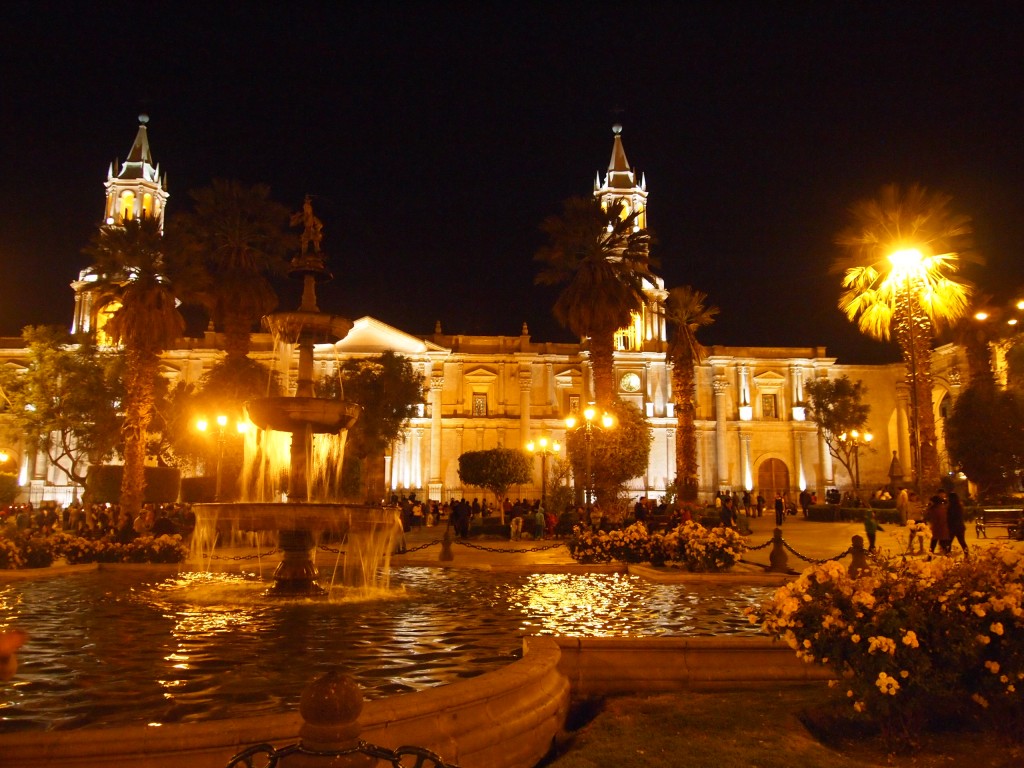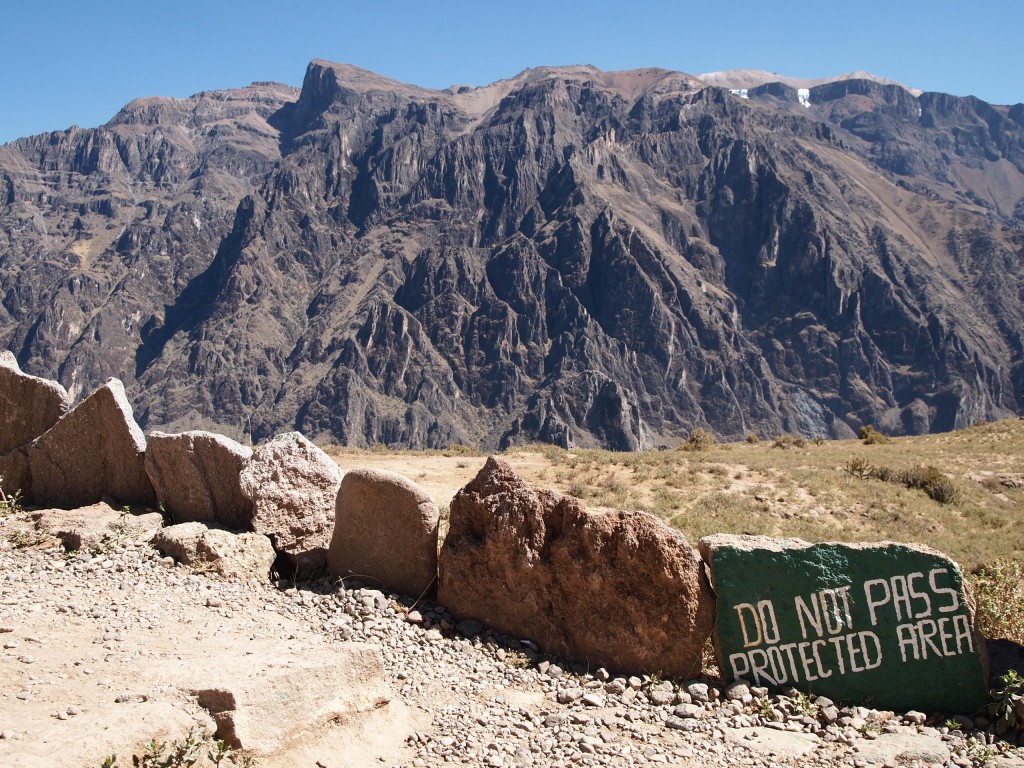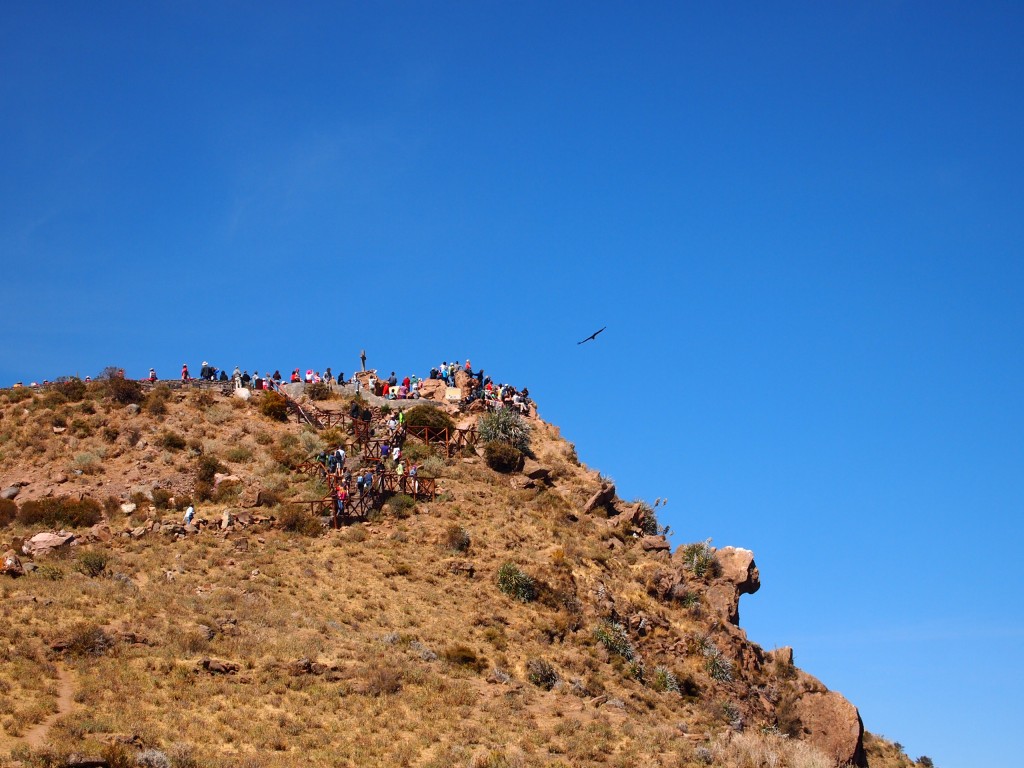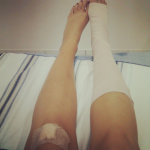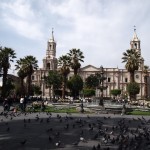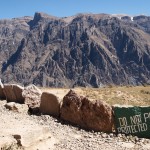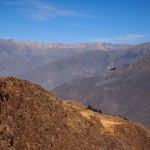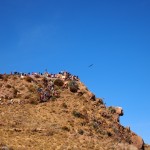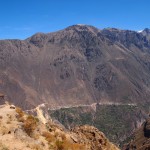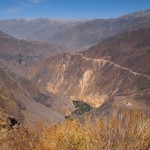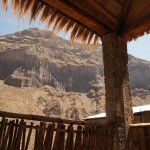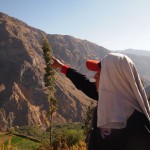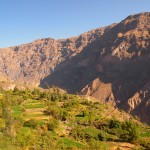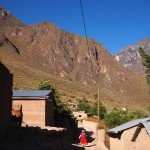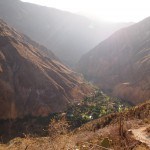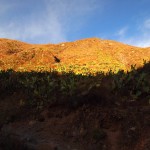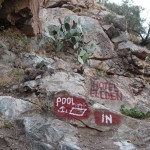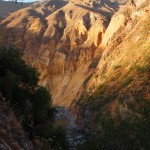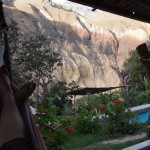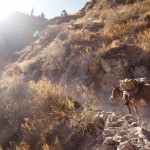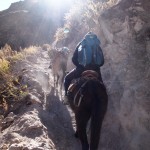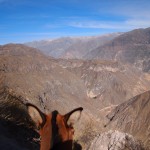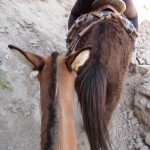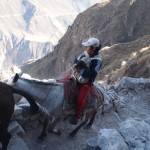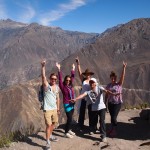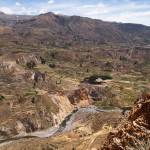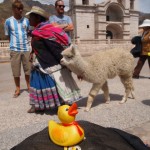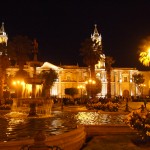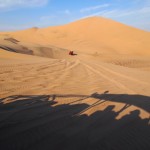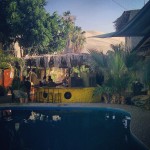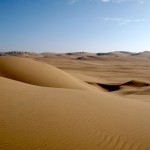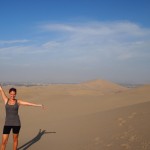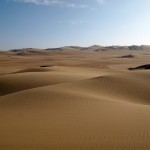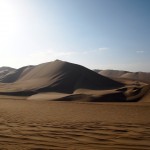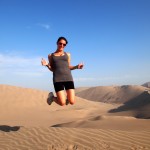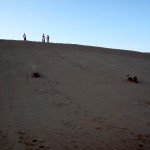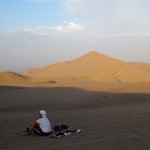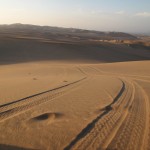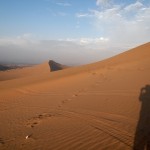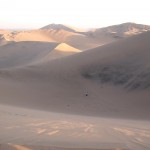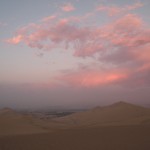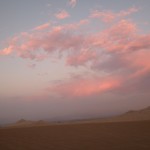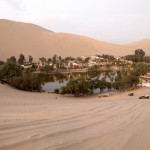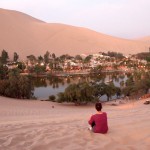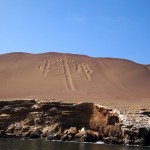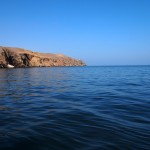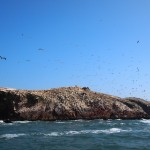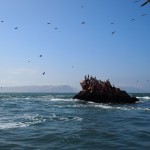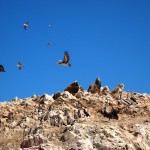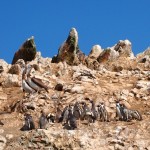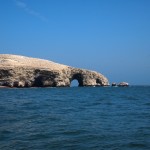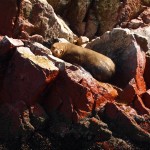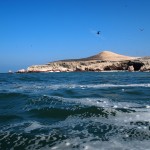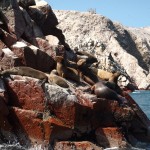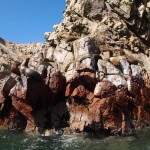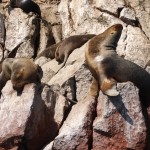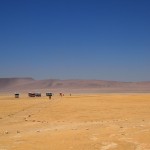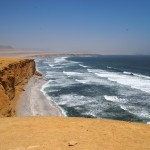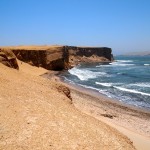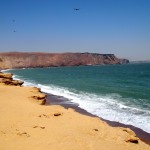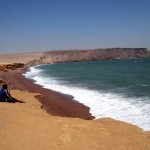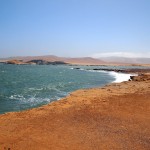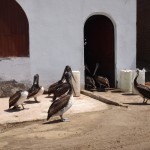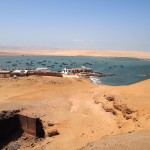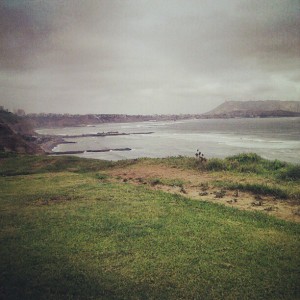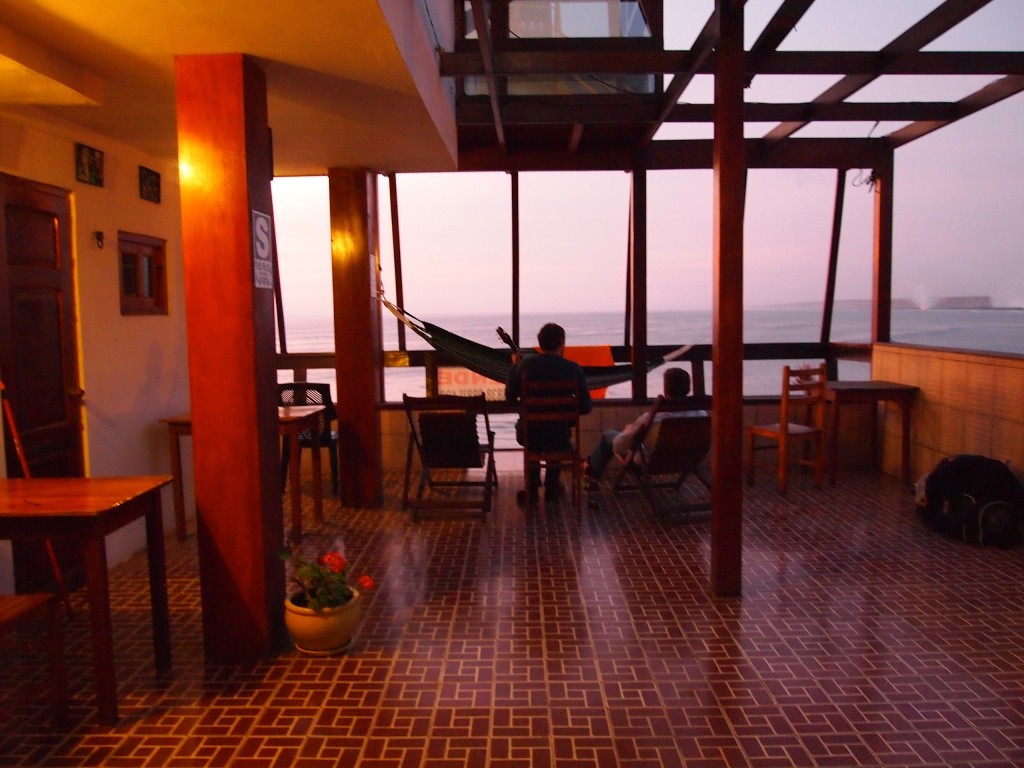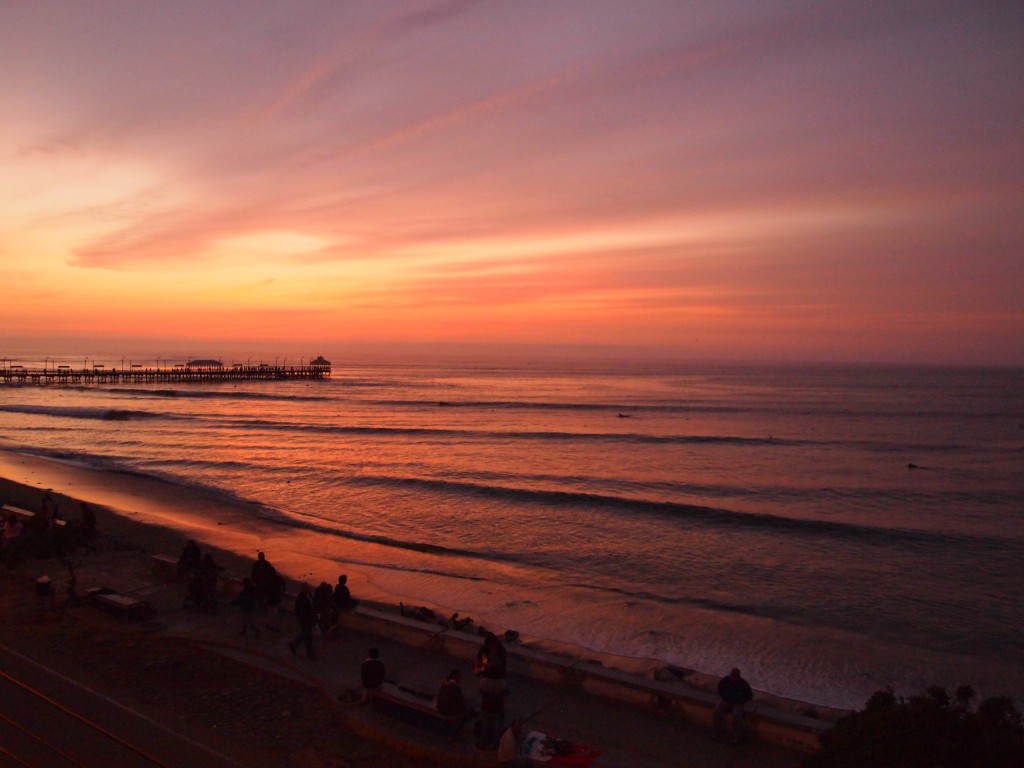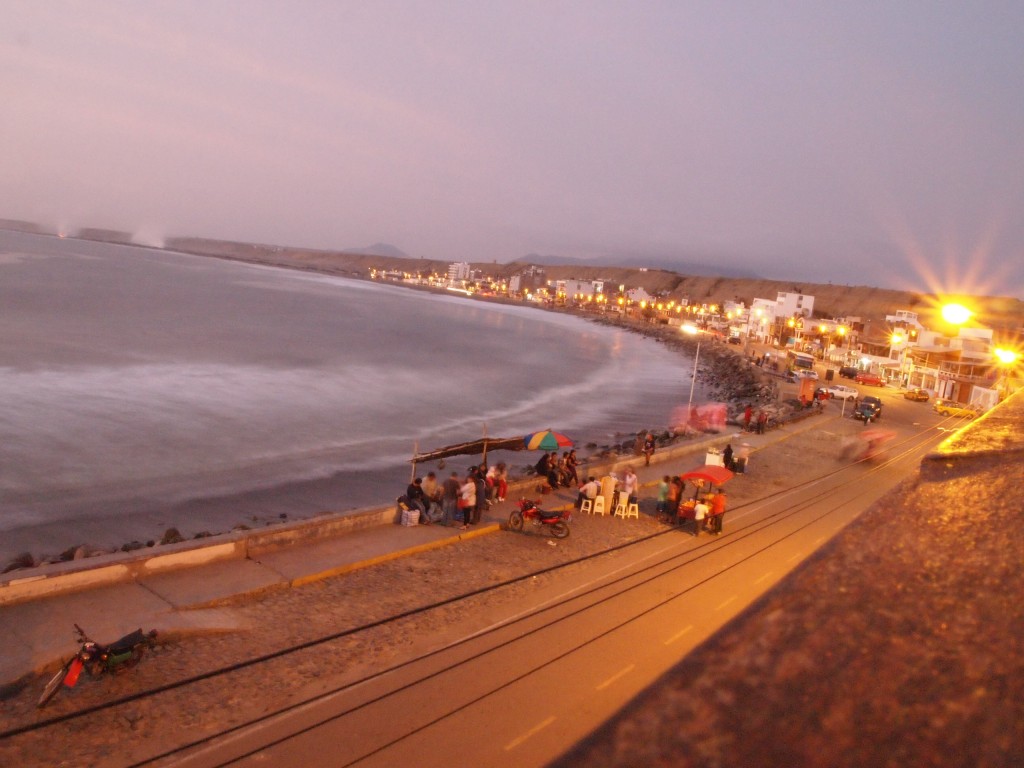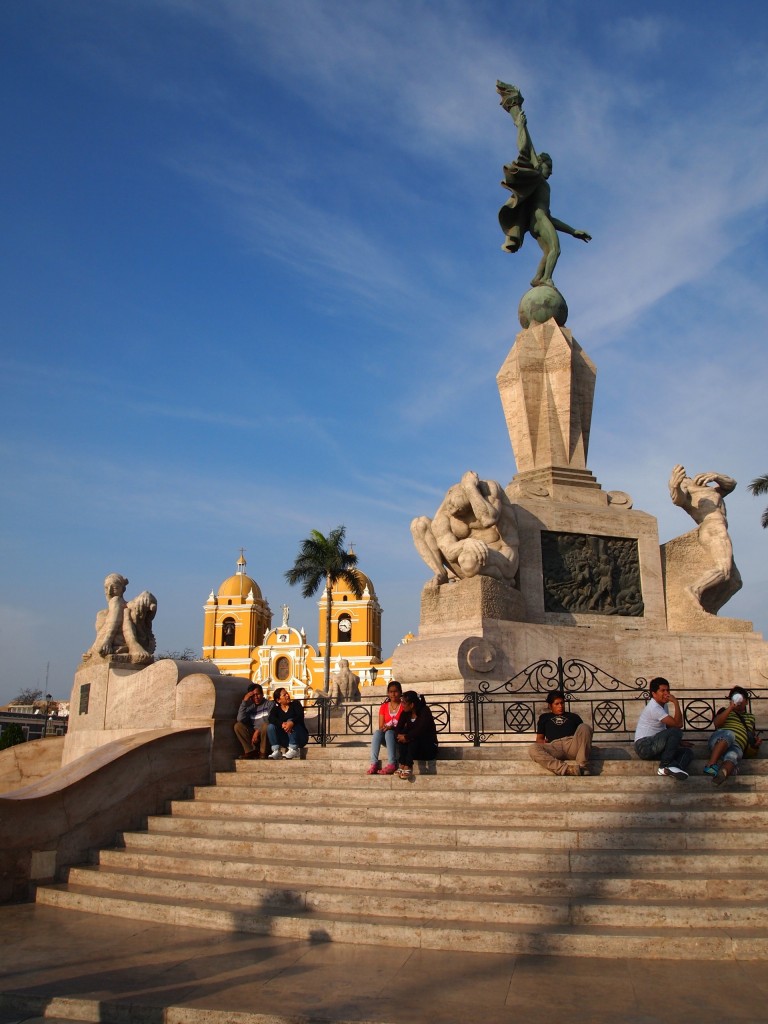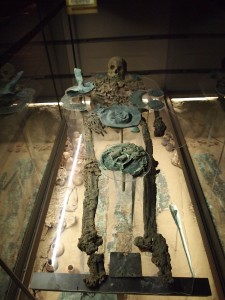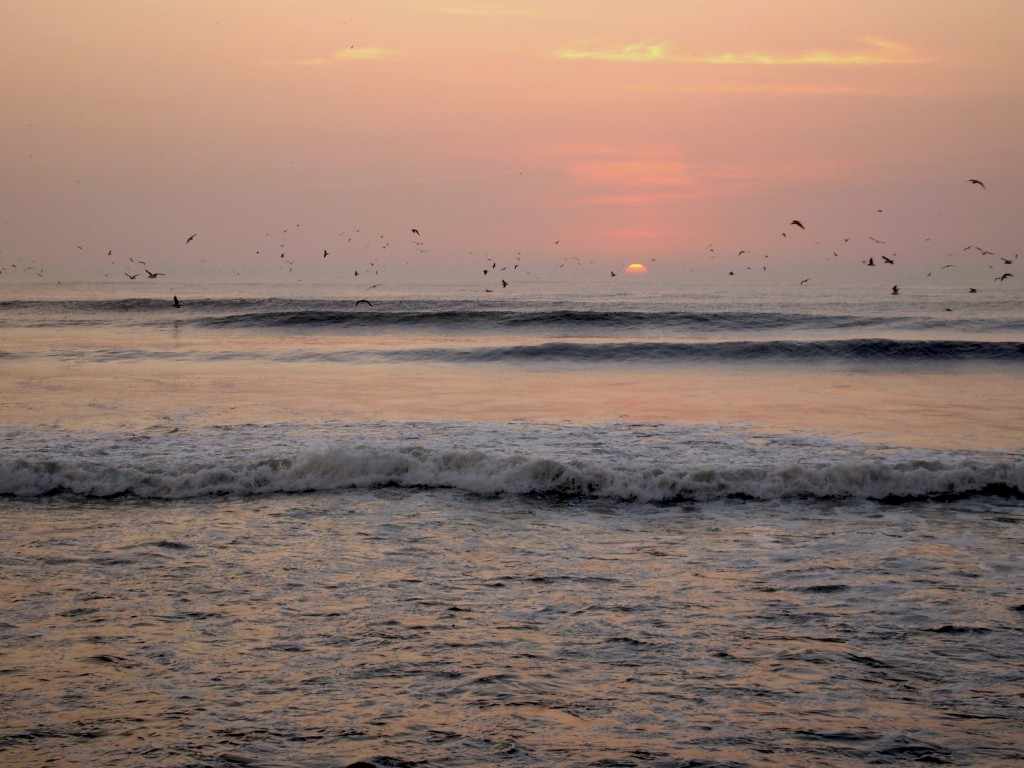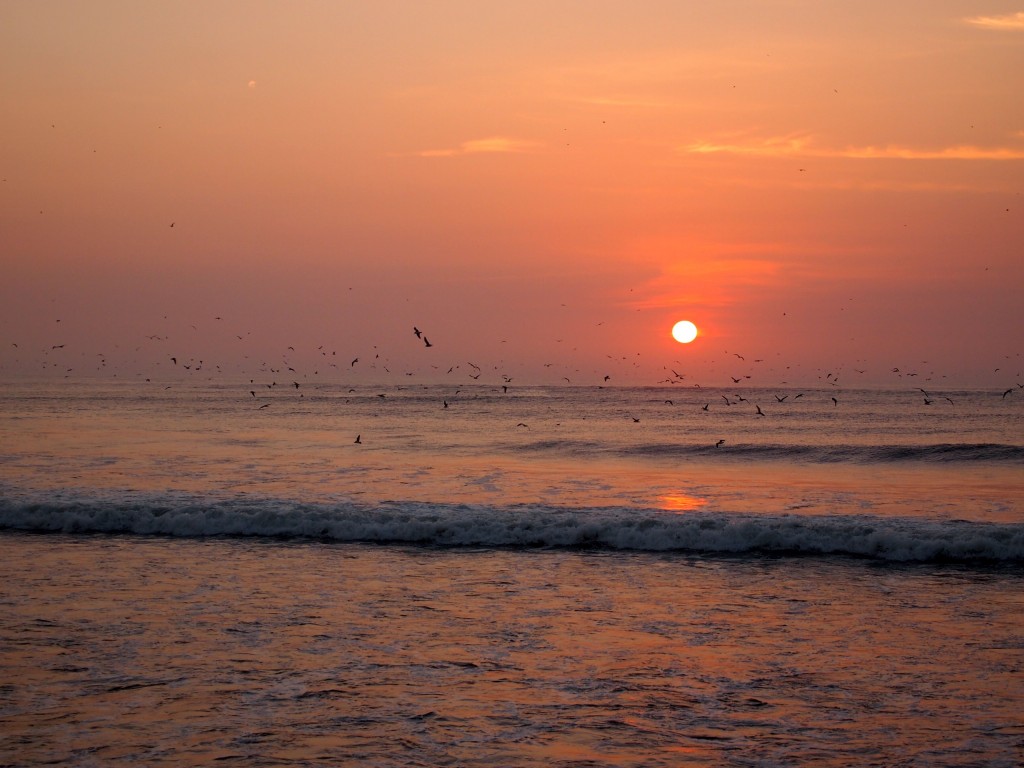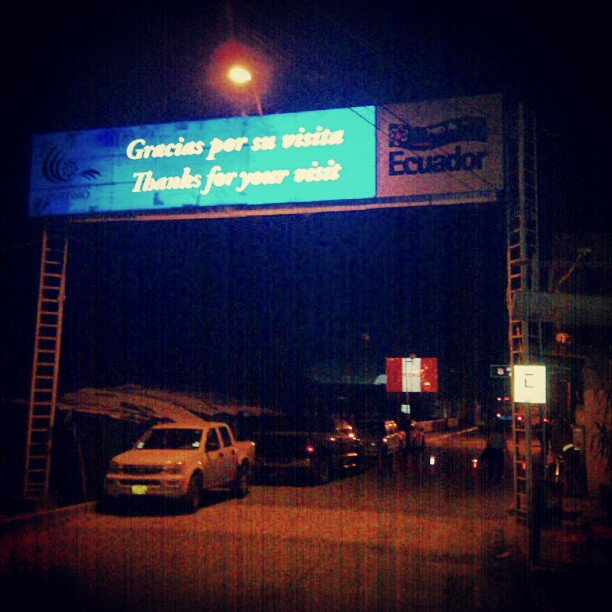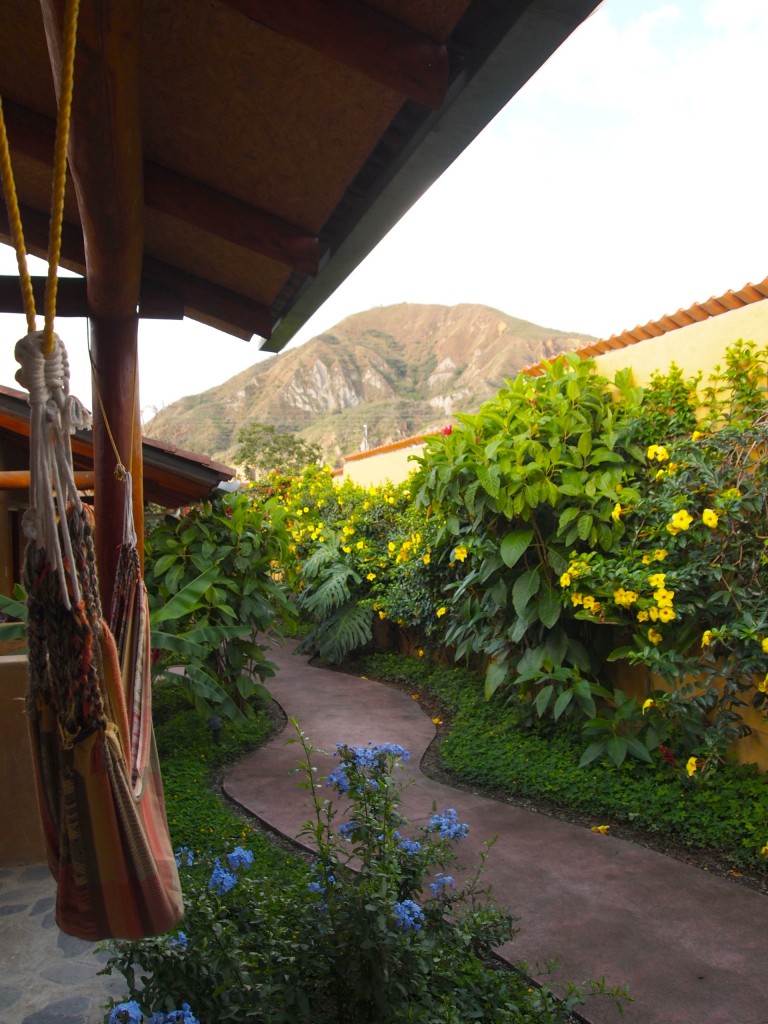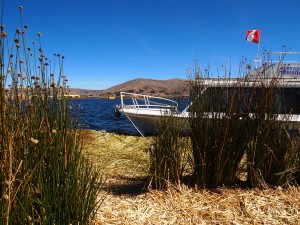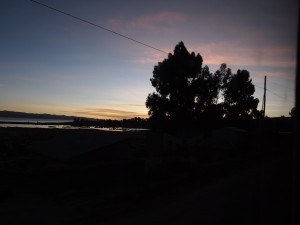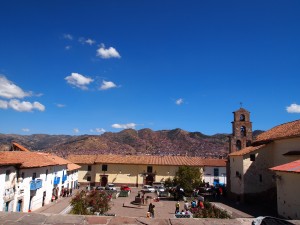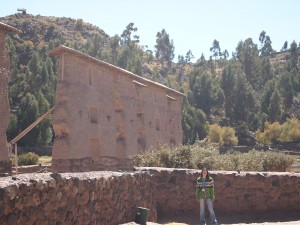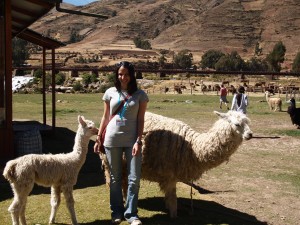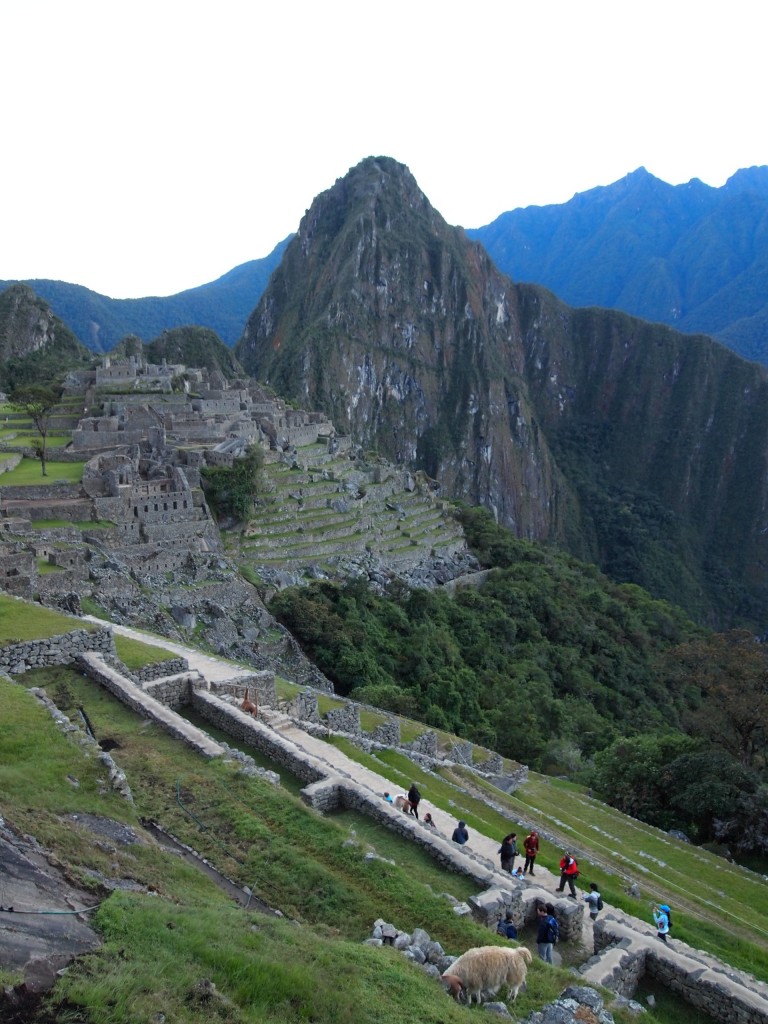I would hike down, and through, one of the deepest canyons in the world but manage to tear a ligament in my foot just several hours afterwards… from tripping trying to get on a bus. All I can think right now is “typical Rachel.” That, and a huge sigh of relief that I didn’t break a bone or seriously hurt myself to the point where I’d need to go home. I just have to be off my foot for a few days, and then I should be good to go. Even after one nights rest and some painkillers/anti-inflamatories, I’m feeling much, much better, and can put some weight on my foot.
It was nearly 4 AM, and I’d been waiting at the bus station in Arequipa for close to 4 hours. The woman I bought my bus ticket from specifically told me (and even wrote on my ticket) to be at the station by 12 AM. Although the bus schedule indicated the bus arrived at 1:30 AM, I decided I’d better listen to the woman instead. Two hours passed, and no bus. I paced, asked the attendant, who said it’d be another hour. After an hour, he said it would be another 20 minutes. Finally, around 3:45 AM, I was sleeping on and off against Dora when he woke me with a start, saying the bus was here. I grabbed my backpacks and my plastic bag of snacks and dashed for the door. Exhausted from being up for nearly 23 hours straight, and out of it from sitting at a bus station for 4 hours, I missed the curb and tripped, slamming my left knee onto the pavement and twisting my right foot inward, landing on top of it, my gigantic backpack slamming me further into the ground.
Everyone around me rushed to help, but when I tried to stand I nearly blacked out from the shock and pain. In complete disbelief, I let the driver stick my bag in the back of the bus, wiped my tears and hobbled up the steps to my seat on the second floor.
I managed to sleep a few hours, but I was so worried about the pain in my foot, and how little weight I could put on it, that I was mostly just freaking out.
When I got to La Paz, I originally had every intention of getting right on a bus to Cochabamba. Instead, I grabbed a cab to the only place I knew: Loki Hostal, the party hostel where I’d stayed almost three months ago. I mostly hated the place for its atmosphere, but I knew they’d keep my bags safe and have a good doctor to send me to, and they did. Fifteen minutes after my arrival, my bags were locked up and I was in another cab, off to a clinic. After I explained what happened in my exhausted form of Span-glish (thank god for my hospital vocabulary lesson in Montanita!), the doctor assessed the pain and explained that because there wasn’t much swelling and I had a wide range of movement, there was no way I could have broken a bone.
Fourteen hours later, I could finally breathe again. I had, however, torn or significantly sprained a ligament on the top of my foot. He gave me a prescription for 800 mg of ibuprofen, cleaned my scraped-up and bruised left knee, wrapped my foot/ankle in an ace bandage and sent me on my way.
Because of the convenience, I asked for a night at the Loki hostel, stumbled pathetically up the stairs, and settled myself into my bunk bed, where I’d been instructed to stay, immobile, for at least 24 hours.
After a much needed 12 hours of sleep, I am feeling a lot better, and I can now put a significant amount of weight on my foot. Since I’ve already spent several days in La Paz and don’t particularly want to be here, especially in this cigarette-smelling hostel filled with party travelers who never leave the building, I’m spending the day relaxing with my foot elevated, then heading to Cochabamba on an overnight bus. I don’t plan to do much walking there, but at least I’ll be in a new city.
And since I’ve got nothing else better to do than write, I’ll make this blog post ridiculously long by including my four days in Arequipa and at Colca Canyon.
I’d anticipated that Arequipa would be a city I’d like, and I was definitely right. Smaller and more quaint, with beautiful architecture and lots of people out and around at all hours of the day, I really enjoyed my two days in the city.
Filiz and I spent our time relaxing, wandering, doing a bit of shopping, seeking out good coffee (a task which proved relatively costly), cooking our own dinners for ridiculously cheap, and taking an interesting walking adventure to the bus station, which wasn’t quite on the city map we had.
After talking with several tour agencies and the woman at our hostel, we finally committed to a two day, one night tour of Colca Canyon — one of the deepest canyons in the world, and one of the most popular trips on Peru’s gringo trail. We’d been told the first day would involve 8 hours of walking, after which we’d spend the night at the bottom of the canyon, and the next day would be a 3 hour hike straight back up the canyon. We knew it wouldn’t be easy, persay, but everyone we talked to who’d done it hadn’t had major problems, and really enjoyed it. We figured if everyone did it, we could too.
And we could — we did — but it certainly wasn’t a cake walk, that’s for sure.
After our 3 AM wake-up call and 3:20 AM hostel pick up, we drove 3 hours in a packed, 12-person van to Chivay, the small town that serves as the gateway to volcano row and Peru’s stunning canyon country. After paying our steep 70 soles ($26 bucks!) entry fee, we got to a restaurant for the typical South American breakfast: bread, jam, and tea. We had another 3 hours or so of driving, broken up by a stop at the Condor lookout, where we were lucky enough to see several condors gliding gracefully above our heads and into the valley below.
Just past 9:30 AM, we began the first half of our walk: 3 hours straight down the canyon. As a total klutz (oh, the irony), the steep, and very dusty, path made of rocks and lose gravel wasn’t exactly my favorite, and I quickly fell behind the group – slowly taking my time getting down the mountain, stopping plenty to take photos and steady my feet. We all met at the bridge crossing the river at the bottom of the canyon, and spent the next half hour walking uphill on the other side of the canyon, finally making it to our lunch spot.
After lunch, we had another hour of uphill walking (yes, up the other side of the canyon, after we’d just climbed all the way down the opposite side), then an hour of relatively flat paths through small villages, and then an hour of downhill walking. Yep, you read that right. We climbed all the way down, then up, just to go back down to the very same river. When we crossed the river for the final time, we’d made it to the ‘oasis’ — a set of bungalows with swimming pools where we’d be spending the night.
It had been ridiculously hot all day, and though I’d specifically purchased a horrifically touristy hat for the hike, the two liters of water I’d drunk throughout the day were clearly not enough. I immediately got a pounding headache and intense nausea and yes, you’ve guessed it: puked for the second time in southern Peru. Sun stroke, dehydration, who knows. My poor body, I just can’t stop abusing it.
Thankfully I managed to keep some coca tea down, and somehow fell asleep around 8 PM, which gave me a solid 10 hours of sleep before we had to be up to catch our mules back up to the top of the canyon.
Yes, you read that right. I copped out. There were four of us in our hiking group: Filiz, myself, Tom and Chloe – a couple from London. Though we felt a tad guilty, Chloe and I both opted for the mules. After being sick, not to mention challenging and exhausting myself the day before, I decided I deserved a ride up, instead of killing myself walking straight up hill for 4 hours. I know my resistance was mental: if I wanted to get up the side of that canyon, I absolutely could have, but I simply didn’t want to. After all, this is my vacation, hah!
The mule ride was slightly terrifying — steep, narrow paths aren’t exactly easily traversed when you’re sitting on top of an animal — but after adjusting to the bouncing and learning to trust our new four-legged friends, we ended up having a great time. I took a slightly nausea-inducing video as we climbed, but the internet here is too weak to let me upload it.
We walked 30 minutes from the entrance to the canyon to our breakfast restaurant, where were all shocked to be served eggs instead of bread — a welcome change. We hopped back in the van and made our way slowly back to Arequipa, with several stops for photo pops, bathroom breaks and an amazing vicuna (another high altitude animal similar to the alpaca and llama) spotting.
- The damage
- Arequipa’s pigeon-infested main plaza
- View of the mountains from the Condor Lookout
- Gorgeous condor (with a 15 foot wingspan) gliding over the outlook + lots of tourists
- View of the canyon from our starting point. See that ridge and those green trees? That’s where we were headed… for lunch.
- View from the starting point on the other direction — the green at the very bottom of the canyon was our ‘oasis’ stop for the night
- The river I’d be crossing in 3 hours…
- I made it!
- View of the mountains from our lunch stop
- Gan Carlos, our guide, pointing out our starting point — the flat part at the verrry top of the canyon, to the right of his finger and the tree
- Standing amongst the greenery we’d seen from the other side of the canyon.
- Indigenous woman who lives in one of the small villages of the canyon
- Almost to the oasis..
- Amazing lighting over a cactus field
- Oh, hello river. We meet again.
- Signs indicating the way to our hostel
- Took about a million photos of this. The lighting was just so spectacular.
- we finally made it! relaxing in a hammock with the last light
- View of the trail we climbed down to the Oasis the day before
- the view during the lucky moments (when I wasn’t staring down, terrified)
- my view for most of the 2 hour ride up the canyon
- Our “guide” at the back of the group, carrying a puppy in a backpack..
- My new bff, Rosla the mule
- Our group, after conquering Colca!
- View of the valley at one of our photo opp stops on the way back to Arequipa
- Stella made it through the whole trek.. in my backpack. I remembered to take her out during our very last lunch stop…
- The main square of Arequipa all lit up at night
So there you have it — how Rachel Kossman traversed a canyon, but managed to tear a ligament in her foot getting on a bus. Like I said, typical Rachel. Moments like this make traveling alone a little bit lonely and a little more scary, but the clinic was wonderfully helpful and in the scheme of life, I’m completely fine, and everything could be much, much worse. After another few days of rest, I’ll be ready for more adventure!


